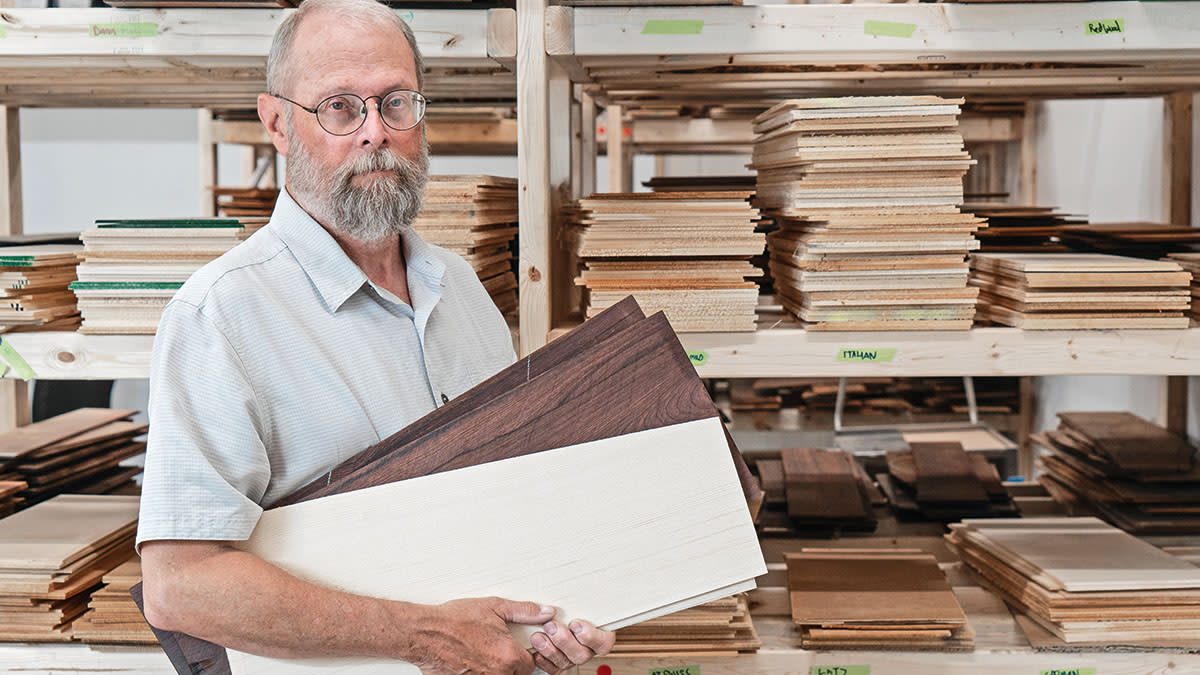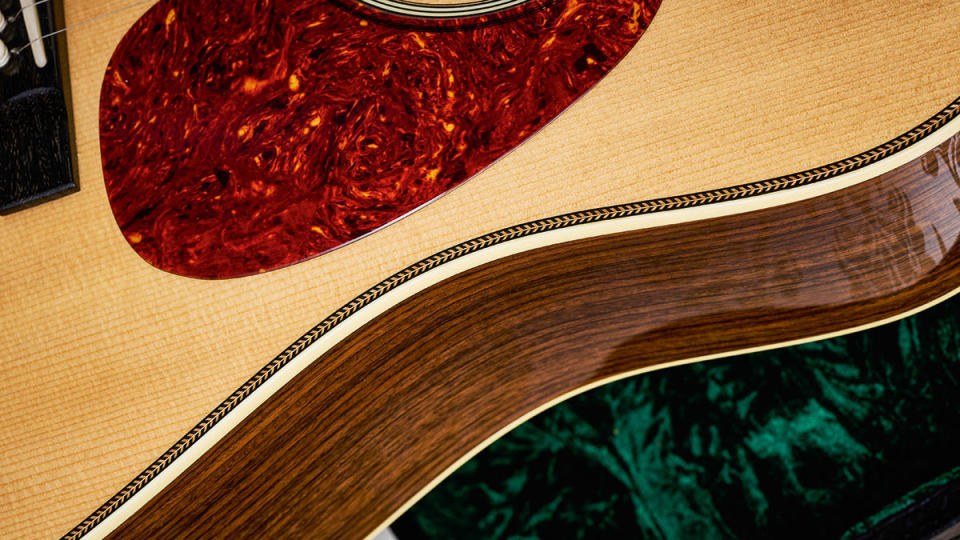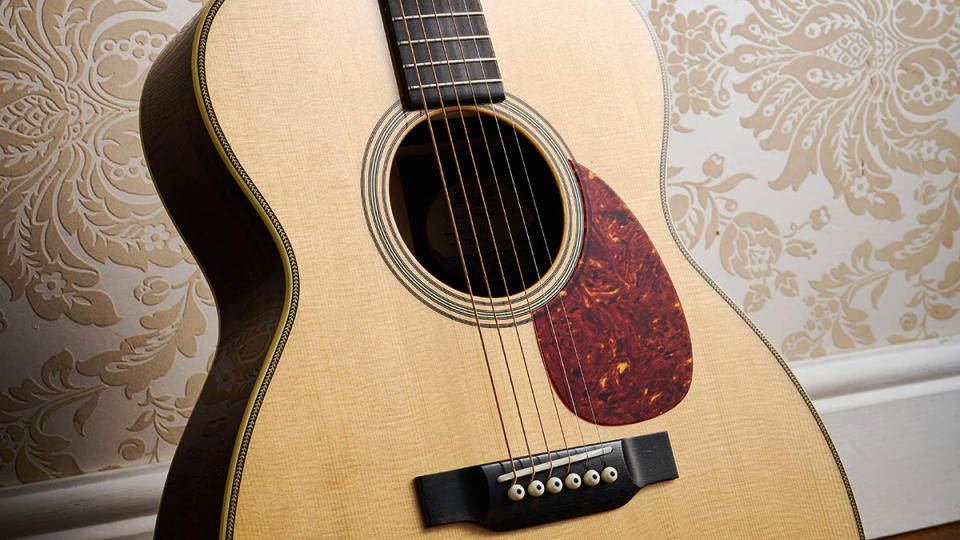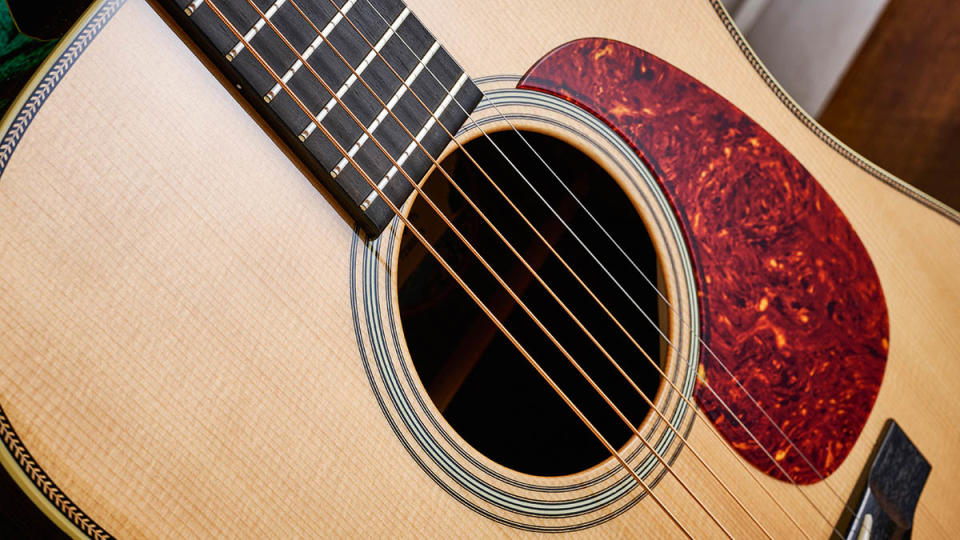“A fine guitar is described as having a piano-like tone. The top is actually able to vibrate in all the different ways that strings are able to vibrate”: Dana Bourgeois explains how innovation breeds great acoustic tone

- Oops!Something went wrong.Please try again later.
The alliance between Eastman and Bourgeois might mean that a great percentage of its new Touchstone acoustic guitar construction is done in China, but it’s carried out under Dana Bourgeois’ strict supervision.
Furthermore, his team in Maine is responsible for selecting, carving and generally engineering the guitars’ tops and carrying out the final setup when the completed guitars are returned to the Bourgeois workshop. We ask Dana how this arrangement works in a practical sense, beginning with the forming of the tops.
What role does the top play on an acoustic guitar?
“Well, in a nutshell, the way a guitar works is that we excite the strings of the guitar with the pick or fingers, the strings move the bridge, the bridge moves the top, and the top essentially pumps air that disturbs our eardrums, and that’s how we hear music.
“A common description of a fine guitar is that it has a piano-like tone. Well, what does that mean? It has a complex tone. And that means that the top is actually able to vibrate in all the different ways that strings are able to vibrate. And if it can’t, then it actually acts as a filter. The worst thing would be a top that vibrated at one frequency – then we would have the equivalent of a tuning fork, which is a very sterile musical instrument.
“So what we try to do is voice the top so that it vibrates in as many different modes – or responds to as many different notes – as possible. That’s just a technique that we’ve learned over many years of trial and error. It’s a matter of flexing the top and making sure that it’s the right stiffness in the right places by holding it in various places and tapping it and listening.
“Where is this top relative to where we would like it to be? And what do we have to do to move it in that direction? We’re trying to get the top to be as responsive to as many different musical notes as possible. If you look at an electronic harmonic spectrum of the output of a guitar, it’s not possible to get it to vibrate at every musical note. However, it is possible to optimise, and that’s what we try to do.”

How does that process begin?
“It actually starts with selecting the top for the model. We like stiffer tops for bigger guitars because they have to span a wider width and length. Then the second stage in the process is actually thicknessing the top to achieve a desired stiffness, both across and along the grain. That’s something that a lot of hand-makers do but not a lot of other guitar manufacturers do.
“When the top is within a stiffness range that we consider acceptable, we glue the braces on. And then it goes through a number of steps of voicing. Some of it is done by rough carving, which is done by less experienced workers, and then more experienced workers do the finish work. Then even more experienced workers do the approval. Occasionally, we’ll replace a brace or a couple braces, but that doesn’t happen very often. It sounds like a very involved process, but we do it fairly quickly.”
The TS D we’ve reviewed is free of that muddy midrange often associated with dreadnoughts. How did you achieve that?
“The dreadnought has difficulty in achieving string-to-string balance. The larger guitars are typically bass-heavy, and they don’t have the kind of treble response that a smaller guitar has. So we’ve altered the bracing a little bit in order to make it more asymmetrical and allow it to respond relatively freely to the lower frequencies. However, we wanted to stiffen it up in certain areas, which will add that singing quality to the high end of the register.
“Most instruments will generate a range of overtones with every note. So a bass note that is considered muddy or unclear would be one that doesn’t have a lot of high-end overtones that add clarity and definition. By stiffening the top asymmetrically, we’ve added some clarity to the bottom-end and at the same time we’ve added that singing, sustaining quality to the treble.
“What we’ve actually done is we only scallop the bass side of the X-brace; we leave the treble side unscalloped. And we have a couple of other little tricks – the little finger braces on the sides are shaped differently, again, to create a stiff side and a flexible side. The idea is to introduce a little more asymmetry into the top of the guitar. And that seems to do very well for our dreadnoughts.”

How does the collaboration with Eastman’s Chinese facility work?
“We’ve passed on full drawings and we approved each part before we built prototypes, but what we give them is a completed, voiced top. We do that in our ’shop and we send them tops pretty much ready to glue on the body. We’ve given them instructions for selecting wood for backs, sides and necks.
“So we’ve communicated our specifications for selecting woods and we’ve communicated our specifications for voicing backs, too. Backs are not voiced in the same way that tops are, but it is possible to make them too stiff or too flexible. We’ve sent them examples of backs that we’ve made and taught them to tap and flex, and so on, and the results have been pretty good.
“We have bi-weekly meetings, via Zoom, and we go over our review of instruments that we’ve received, and we keep narrowing down the things that we still need to talk about. The objective is for Eastman to build guitars that are 100 per cent of the quality of the guitars that we produce in our Lewiston, Maine ’shop – to produce a guitar that is half the price of the guitar that we would build and far more than half the quality.”

You’ve announced the forthcoming Country Boy models on your website. Are there plans to extend the Touchstone range further?
“Absolutely. We just received the first batch of the Country Boys, so we will begin distributing them, I’m going to say, within a month. And there’s another model behind that, which we have just approved prototypes for and it will be, again, a dreadnought and an OM.
“We wanted to take a traditional style and dress it up with a few luthier features like wooden bindings and some very simple inlays. The Signature Model will be Madagascar rosewood back and sides and ziricote bindings on the body, neck and headstock. Fairly simple appointments but a little non-traditional.
“I should add that on top of these models, we also have two new body styles in prototype: one is a slope‑shoulder dreadnought and the other one is an L-00 style guitar. So each of these three models will eventually be available in four body sizes. And we’ll be expanding beyond that.”

